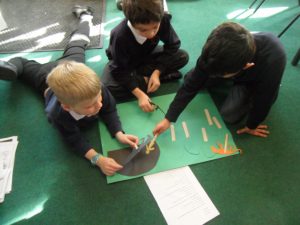A primary school is reducing its admissions for one year because fewer children are living in the area.
Rudyard Kipling Primary School, in Chalkland Rise, Woodingdean, plans to cut the published admission number (PAN) for its reception year to 30 for the September 2025 intake.
Brighton and Hove City Council asked the Office of the Schools Adjudicator to approve the reduction from next year because falling numbers have left the school with a financial deficit. Funding is based on pupil numbers.
The council told the Office of the Schools Adjudicator: “The council’s ability to license schools’ deficit budget positions for this financial year has been significantly affected by the number of schools in the city forecasting a deficit and the potential impact on the council’s general fund.
“This is in part due to sustained falling pupil numbers across the city.
“The budget plan developed to bring Rudyard Kipling Primary School out of deficit requires the school to reduce from two forms of entry to one form of entry.
“This financial pressure is the major change in circumstances since the admission arrangements were determined in January 2024.”
Rudyard Kipling is in one of five primary schools in a wider “planning area” along with Woodingdean, Saltdean, St Margaret’s and Our Lady of Lourdes.
For the 2025-26 school year, 140 children are expected to start school in primaries with 270 places. Without changes, there will be 130 spare places.
In September, 40 four-year-olds started in reception at Rudyard Kipling and 51 at Woodingdean Primary.
Rudyard Kipling’s head teacher Euan Hanington said that pupil numbers were expected to increase for September 2026, hence the decision to reduce admissions for one year only.
Mr Hanington said: “We did this because there are only 77 reception-aged children in the area next year.
“This number is set to rise to 86 for 2026 so our intention at this point in time is for this drop to 30 to be for September 2025 only.”
The council has previously asked Rudyard Kipling to reduce its admission number because fewer four-year-olds are starting school across Brighton and Hove.
In December 2021, parents campaigned against a proposal to cut the intake at Rudyard Kipling from 60 to 45.
A similar proposal was put forward for September 2025, but withdrawn due to concerns about mixed-age teaching.
The council has been trying to reduce intakes as reception class numbers fall since 2019.
The 2021 census recorded 22 per cent fewer children under four in Brighton and Hove compared with the 2011 census – and the effect of this is already being felt in several schools.
The council forecasts that there may only be 1,959 children requiring a reception year place in 2025 and 1,948 in 2026.
After seven years of falling pupil numbers in primaries, the council has started consulting on proposals to change secondary school admissions, starting with a survey on new catchment areas and reduced PANs.
The survey is open on the Your Voice section of the council’s website until Wednesday 23 October.










Crescent Road South does not exist. Check the map again.
I’m a broken record on this, but the downward trend of children is very much a symptom of local housing supply and an overall birth rate decline nationally, which is exacerbated by living costs making families deciding that having children is unaffordable.